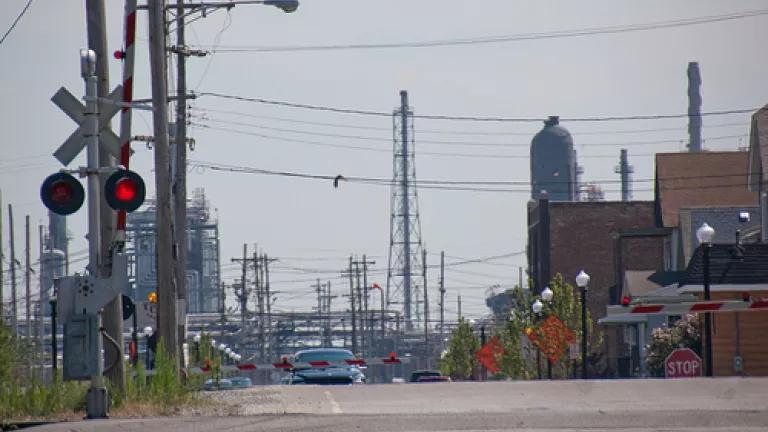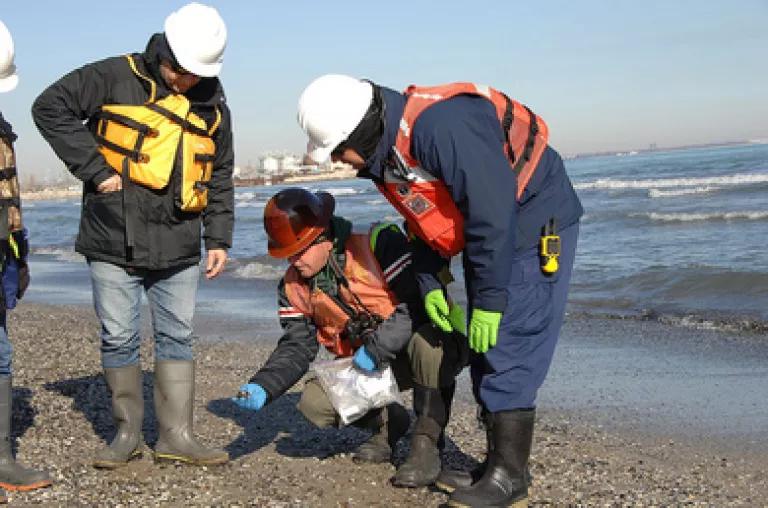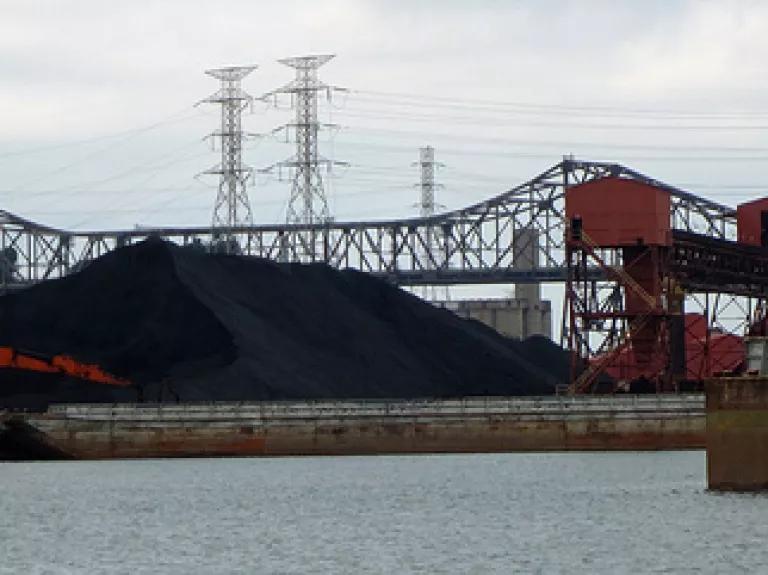
Buried in the State Department’s final environmental impact statement for the Keystone XL pipeline issued in January is an argument that switchovers to tar sands refining are A-ok because they actually reduce pollution. This is just wrong, as we have plenty of information that refining dirtier crude leads to dirtier emissions. But what’s really interesting about this strange, counterfactual argument is just how badly the Department blew it in picking their poster child.
The statement’s case in point about how tar sands expansions actually benefit the environment is . . . wait for it . . . BP’s refinery in Whiting, Indiana. Yes, that BP Whiting refinery. And no, I am not kidding.

In case you have understandably blocked BP Whiting’s remarkable track record of misdeeds since first announcing its tar sands expansion in 2006 -- this is the refinery that just last week spilled tar sands oil into Lake Michigan, drinking water source for millions. This is the refinery that planned in 2007 to dump 54 percent more ammonia and 35 percent more toxic sludge into the Lake in connection with the tar sands expansion project, until region-wide outrage made them back down. It’s the refinery that received multiple notices of violation in recent years from EPA, among other things for releases of carcinogenic benzene. It’s the refinery that asked for and received a variance a few years ago allowing it to discharge mercury to Lake Michigan at more than 17 times the applicable water quality standard, until we made enough public noise about it that Indiana agreed to bring the number down to “only” about 7 times the standard. It’s the refinery that’s the source of massive petcoke mounds currently blighting and blowing through Chicago’s Southeast Side.
And – most importantly here – it’s the refinery we had to battle about for years in litigation because BP cooked the numbers in its air permit application to the State of Indiana for the refinery expansion. Since major projects such as this one have to include modern air pollution control equipment if they are going to increase emissions, BP handily dealt with that problem by simply not counting a bunch of its new pollution sources, while way overestimating how much pollution it would get rid of by shutting down old equipment. And then trying to keep a straight face when claiming that the tar sands expansion was actually going to reduce pollution. Indiana is in the habit of not asking a lot of hard questions about that sort of thing when $4 billion investments are involved, but we had a problem with it, and so did EPA. BP ended up agreeing in settlement to $400 million worth of new pollution control equipment, plus millions in fines.
And this – this – is what the environmental impact statement references to make the case that tar sands expansions actually reduce pollution. Without any mention whatsoever to the half-decade of litigation and negotiation over the air pollution permit, or the whopping magnitude of the settlement, the statement simply summarizes the funny numbers that BP put in its original permit application, and credulously concludes, “As a result of improvements in control technologies and the reductions from retiring older units, completed refinery upgrades generally result in a decrease in emissions.”

About the only thing we’re convinced of by the citation to BP’s cooked numbers is that someone was pretty darned hard up for data suggesting that tar sands refining is anything but dirty. The truth is, BP Whiting has already supplied us with plenty of data demonstrating what we can expect if approval of Keystone XL facilitates more tar sands expansions. Like the oily data that folks in hazmat suits had to clean up out of Lake Michigan following last week’s spill; and the dusty black clouds of data blowing off the piles of BP-generated petcoke that ends up in Chicago Southsiders' lungs with every gust of wind.
Top photo by Eric Allix Rogers
Middle photo by U.S. Coast Guard
Bottom photo by Josh Mogerman

